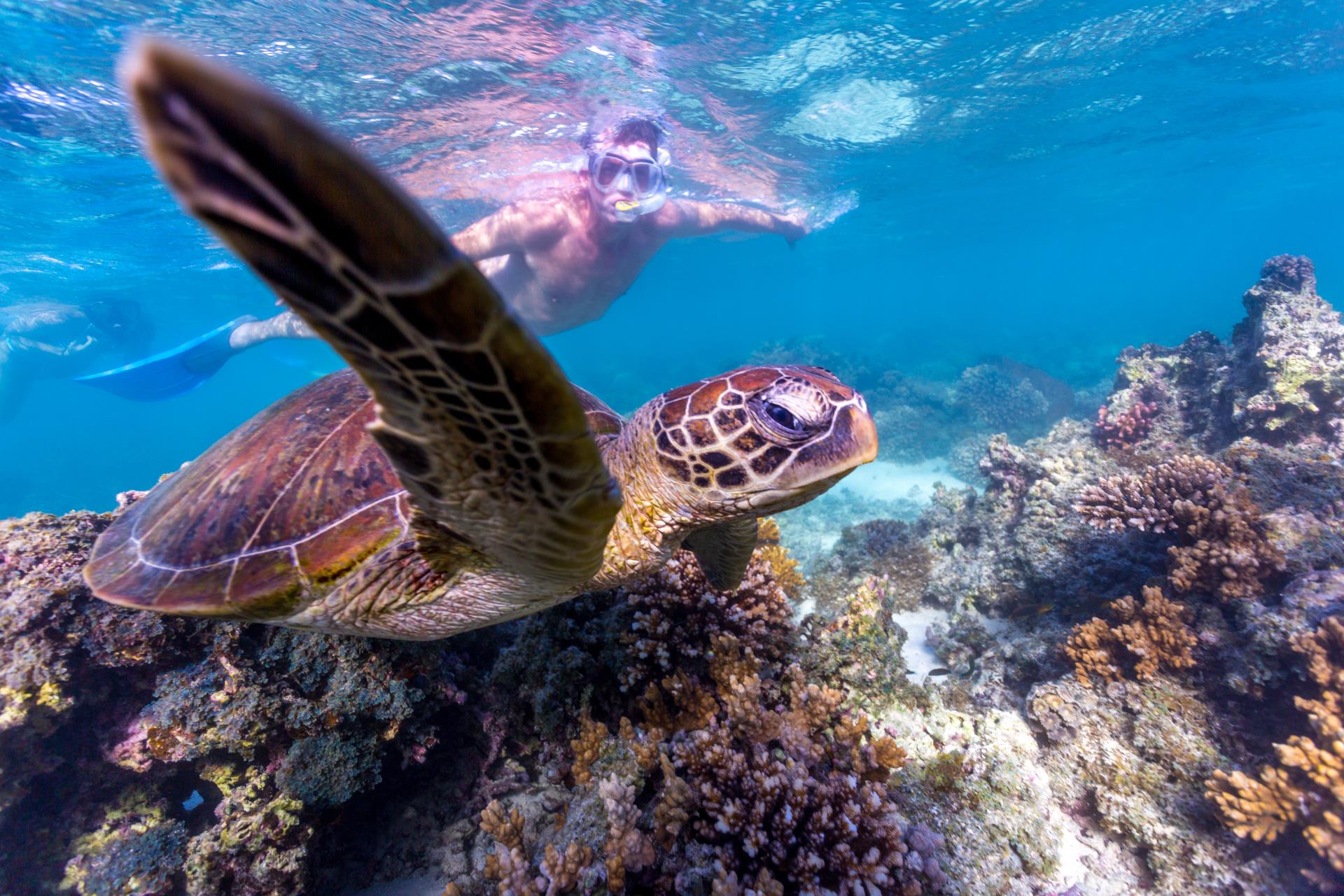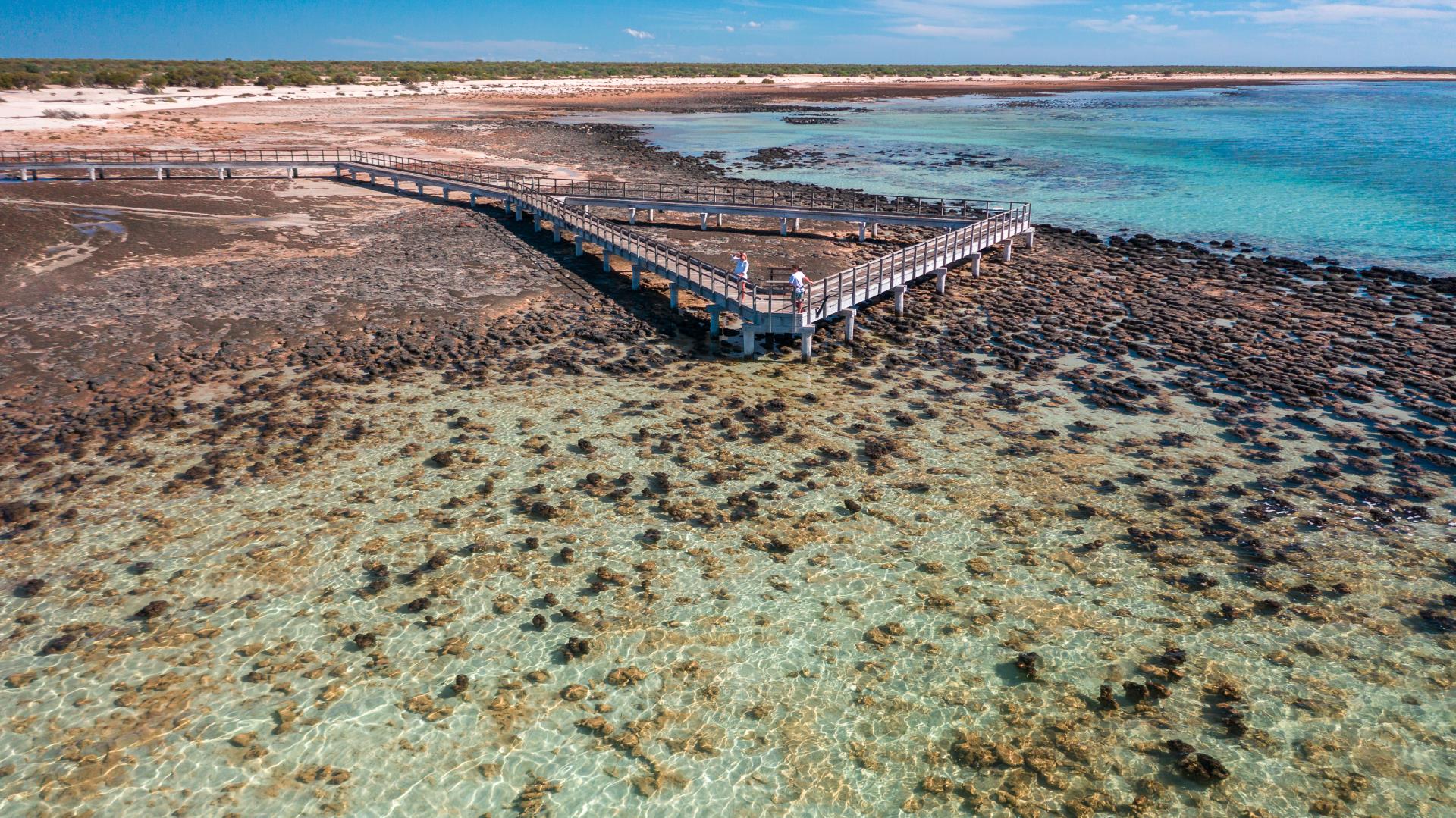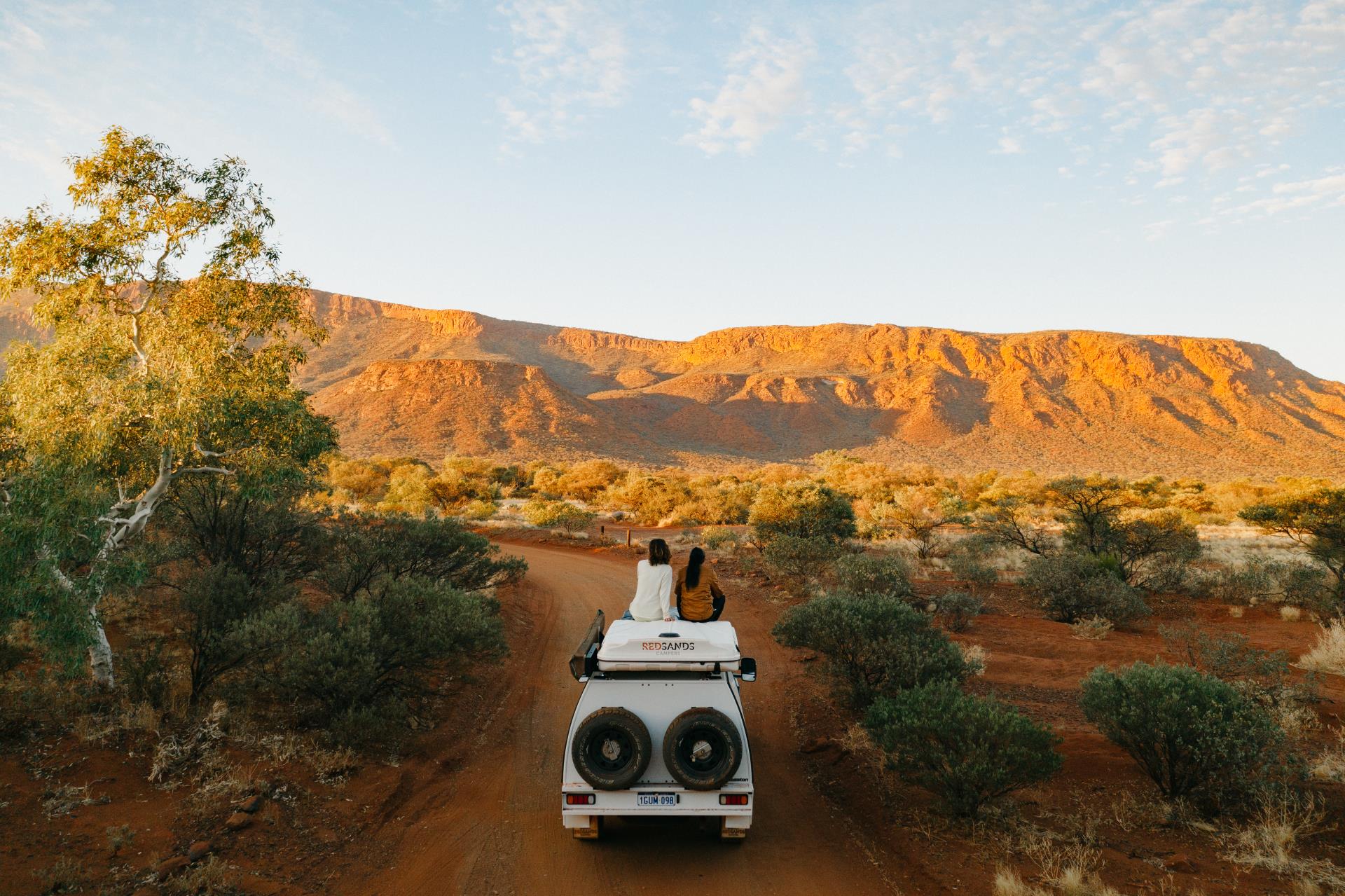EXPERIENCES
The Gascoyne is home to some iconic experiences and ancient landscapes including two world heritage listed locations. Two regional tourism organisations, Australia’s Coral Coast and Australia’s Golden Outback, are fantastic resources to help you plan your trip. Both websites are loaded with suggested itineraries, event calendars, accommodation and tour information. Both organisations have an annual holiday planner available for download or available as a hard copy.
Australia’s Coral Coast Holiday Planner
Australia’s Golden Outback Holiday Planner
Local Visitor Centres are also a great resource for local information and expert help. Book tours and accommodation, find the best places to eat, take home a unique souvenir or just chat about the weather and road conditions. Accredited Visitor Centres are located in Exmouth, Carnarvon and Denham.
Visiting and camping in our beautiful National and Marine Parks in the Gascoyne is an experience not to be missed. During peek periods bookings are essential and can be made through Western Australia’s Parks and Wildlife Service.
If you are headed inland towards the Gascoyne rangelands the Gascoyne Junction Community Resource Centre is the best resource for the latest road conditions and travel trips.
Towns
The main population centres in the region are Exmouth, Carnarvon and Denham. Gascoyne Junction is a small inland settlement and gateway to the Gascoyne outback.
Flights
The Gascoyne is serviced by Qantas and REX Regional Express. Qantas operates daily flights to Learmonth airport which is a half hour drive from Exmouth and one hour from Coral Bay. REX Regional Express operates daily between Perth Airport, Carnarvon Airport and Monkey Mia Airport, Shark Bay. Denham is a 10 minute drive from Monkey Mia Airport.
Coral Coast World Heritage
The Ningaloo Reef is Australia’s largest fringing coral reef located along the Gascoyne coast stretching from Point Quobba north of Carnarvon to Exmouth. Many areas of the reef are just a few metres from the shore, making it easily accessible to people of all different swimming abilities. The unique natural beauty and ecology of the area were acknowledged when it was awarded Ningaloo Coast World Heritage status in 2011. It is home to dolphins, dugongs and an abundance of terrestrial and marine flora and fauna, making it a popular holiday destination for both national and international visitors.

Turquoise Bay, Exmouth (image courtesy of Tourism WA)
Ningaloo Reef is one of the few places in the world where whale sharks, the world’s largest fish, appear regularly in near-shore waters making them accessible to observers, tourists and divers. The mass spawning of over 200 species of coral in March and April each year heralds the arrival of the whale shark to the Ningaloo Reef. The whale sharks feed for four months until June before disappearing for another year.
The coral reef fish in the Ningaloo are among the most colourful and beautifully patterned of all living creatures. Even the novice snorkeler can swim in the shallows and witness an amazing variety of fish life. They live in and around hundreds of species of coral, ranging from the cabbage coral, brain corals, and lavender corals, to delicate colourful branching corals, which form gardens in the shallow lagoons. Green turtles have extensive rookeries inside the reef, dugong feed on seagrasses within the lagoons and humpback whales migrate close to the coast.
The reef is within a State Marine Park which caters for multiple uses including fishing. Visitors are requested to be aware of and respect zonings and throughout the park.
Shark Bay World Heritage
The unique natural beauty and ecology of the area were acknowledged when it was awarded World Heritage status in 1991. The features of Shark Bay satisfied all four World Heritage natural criteria; natural beauty, ecological processes, biological diversity and earth’s history.

Stromatolites, Hamelin Pool Shark Bay
Its colourful and diverse landscapes are home to an abundance of animals and plants, including some found nowhere else on Earth. Shark Bay’s unique stromatolites, wildlife and plants, exceptional landscapes and ongoing evolutionary processes all contributed to its World Heritage listing.
The land forming Shark Bay is in three prongs with the outer prong at the Western most point of Australia, defined by the spectacular Zuytdorp Cliffs. The coastal experience of the inner peninsular of the Shark Bay World Heritage area is characterized by red sand dunes meeting white sandy beaches stretching into sparkling turquoise water. The bays contain vast sea grass meadows which provide spawning and nurturing habitats for an array of mammal and fish species.
Shark Bay’s sea grass meadows have influenced the physical, chemical, biological and geomorphic evolution of the region’s marine environment. Sediments trapped by sea grasses have formed banks and sills, affecting tidal flow which, combined with the hot dry climate, have created areas of super-concentrated salinity. This has not only led to the emergence of genetically distinct, salt-tolerant animals, but has allowed the proliferation of cyanobacteria and creation of stromatolites, which are in themselves a World Heritage value.
Shark Bay is a refuge for numerous rare and threatened plants and animals. Largely spared the habitat destruction and introduced predators that wreaked havoc on mainland Australia, it is the last stronghold for five critically endangered mammals – four of which occur in the wild nowhere else on earth. These are the Banded Hare-Wallaby, Shark Bay Mouse, Western Barred Bandicoot and the Rufous Hare-Wallaby (Mala).
The Shark Bay World Heritage Area offers a range of attractions and activities to the visitor. It is also home to the world famous Monkey Mia where visitors were first able to interact with wild dolphins.
Outback Pathways
The Kennedy Range and Mount Augustus National Parks to the east provide authentic outback experiences that complement the coastal offerings. Vast, rugged, beautiful, and timeless, the Gascoyne region epitomises outback Australia.

Mt Augustus, Upper Gascoyne
The Gascoyne Outback Pathways provide ready access to natural and cultural wonders via historical routes. Each of the pathways has a unique set of stories available to the traveller through a series of interpretive sites.
The Kingsford Smith Mail Run – 800 km
From Carnarvon to Meekatharra via Mt Augustus- follow in the wheel ruts of Australia’s most famous pilot and learn about the mail runs that linked this landscape. Allow three days travel time.
Kingsford Smith Mail Run
The Wool Wagon Pathway-1160km
From either Geraldton or Yalgoo via Murchison Settlement and Gascoyne Junction to Exmouth – explore the legendary pastoral country of the Gascoyne and Murchison Region. Allow three days travel time.
The Wool Wagon Pathway
When
The ideal time to travel the Outback Pathways is between April and October when the weather is cooler.
Plan your trip
The Gascoyne Murchison Outback Pathways is a self drive experience. Much of the journey is on unsealed roads through remote country. It is important that your vehicle is suitable, that you have enough fuel and water for the journey and that you let someone know your departure and arrival place and time.
You can find advice on preparing for your trip on the Outback Pathways website.
Other incredible Gascoyne experiences
Swimming with Whale Sharks on the Ningaloo Reef
The dolphins of Monkey Mia
Cape Range National Park
Francois Peron National Park
Shell Beach
Gascoyne Food Festival
Swimming with Humpback Whales
Ancient living fossils in Hamelin Pool, the stromatolites
Bernier and Dorre Islands
The magical Muiron Islands
Dirk Hartog Island
Wind and Water Sports
Sites of International and National Significance
The Gascoyne is recognised for it’s outstanding natural, historic significance. Together with the the World Heritage listed Ningaloo Coast and Shark Bay notable mentions include:
Dirk Hartog Island and Cape Inscription
HSK Kormoran
HMAS Sydney II
Biodiversity hotspots of the Geraldton to Shark Bay sand plains and the Carnarvon Basin